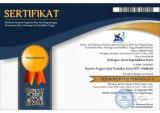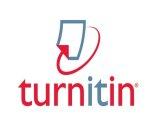In Silico Study of Antidiabetic Activity Mikania Cordata as PPAR- γ Agents
DOI:
https://doi.org/10.33394/hjkk.v13i5.18110Abstract
Diabetes mellitus remains a significant global health problem, requiring safer and more effective therapeutic agents. Peroxisome Proliferator-Activated Receptor gamma (PPAR-γ) plays a crucial role in regulating glucose metabolism by enhancing insulin sensitivity, making it a key target in the development of antidiabetic drugs. Pioglitazone, a PPAR-γ agonist from the thiazolidinedione class, has long been used as a conventional therapy; however, its long-term use is associated with side effects such as fluid retention, weight gain, and an increased risk of heart failure. The World Health Organization recommends the development of natural-based drugs with minimal adverse effects. One promising plant candidate is Mikania cordata, which has been reported to possess antidiabetic activity and contains various bioactive compounds, including terpenoids, flavonoids, sterols, and sesquiterpenoids. This study aimed to evaluate the bioactive compounds of Mikania cordata as potential natural PPAR-γ agonists using a molecular docking approach. A total of 36 ligands from M. cordata were docked to the PPAR-γ protein (PDB ID: 2PRG), with Pioglitazone serving as the positive control. Docking was performed using PyRx with the AutoDock Vina system after ligand and protein preparation with UCSF Chimera 1.16. The docking results were analyzed using BIOVIA Discovery Studio Visualizer to identify the interactions between the ligand–protein complexes. The results showed that Cordatolide exhibited the lowest binding affinity (–9.1 kcal/mol), followed by Stigmasterol (–8.9 kcal/mol), both of which were better than Pioglitazone (–8.8 kcal/mol). Interaction analysis revealed that Cordatolide formed two hydrogen bonds with key residues ARG288 and GLY284, accompanied by stable hydrophobic interactions without any unfavorable contacts. Meanwhile, Stigmasterol also showed competitive affinity, although its stability relied solely on hydrophobic interactions without hydrogen bonding. Therefore, Cordatolide demonstrates strong potential as a natural PPAR-γ agonist with fewer side effects compared to conventional therapies. This study provides a novel finding on the potential of M. cordata as a natural PPAR-γ agonist; however, further in vitro and in vivo evaluations are required to confirm its pharmacological activity.
Published
How to Cite
Issue
Section
Citation Check
License
License and Publishing Agreement
In submitting the manuscript to the journal, the authors certify that:
- They are authorized by their co-authors to enter into these arrangements.
- The work described has not been formally published before, except in the form of an abstract or as part of a published lecture, review, thesis, or overlay journal.
- That it is not under consideration for publication elsewhere,
- That its publication has been approved by all the author(s) and by the responsible authorities – tacitly or explicitly – of the institutes where the work has been carried out.
- They secure the right to reproduce any material that has already been published or copyrighted elsewhere.
- They agree to the following license and publishing agreement.
Copyright
Authors who publish with Hydrogen: Jurnal Kependidikan Kimia agree to the following terms:
- Authors retain copyright and grant the journal right of first publication with the work simultaneously licensed under a Creative Commons Attribution License (CC BY-SA 4.0) that allows others to share the work with an acknowledgment of the work's authorship and initial publication in this journal.Â
- Authors are able to enter into separate, additional contractual arrangements for the non-exclusive distribution of the journal's published version of the work (e.g., post it to an institutional repository or publish it in a book), with an acknowledgment of its initial publication in this journal.
- Authors are permitted and encouraged to post their work online (e.g., in institutional repositories or on their website) prior to and during the submission process, as it can lead to productive exchanges, as well as earlier and greater citation of published work.
Licensing for Data Publication
Hydrogen: Jurnal Kependidikan Kimia uses a variety of waivers and licenses, that are specifically designed for and appropriate for the treatment of data: Open Data Commons Attribution License, http://www.opendatacommons.org/licenses/by/1.0/ (default) Other data publishing licenses may be allowed as exceptions (subject to approval by the editor on a case-by-case basis) and should be justified with a written statement from the author, which will be published with the article.








